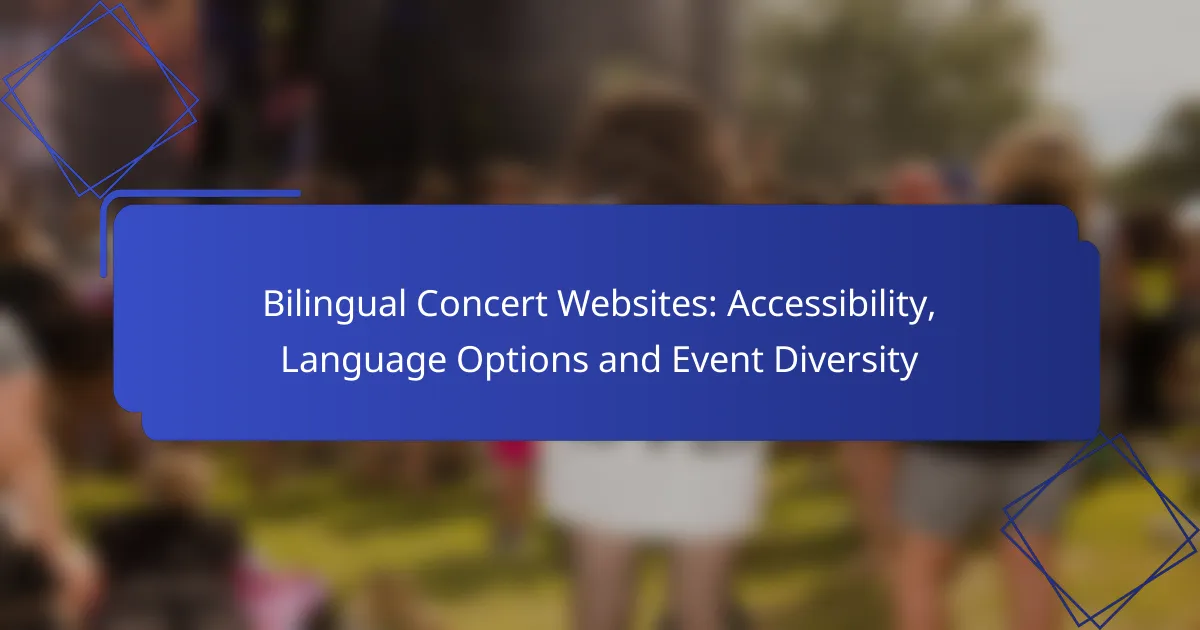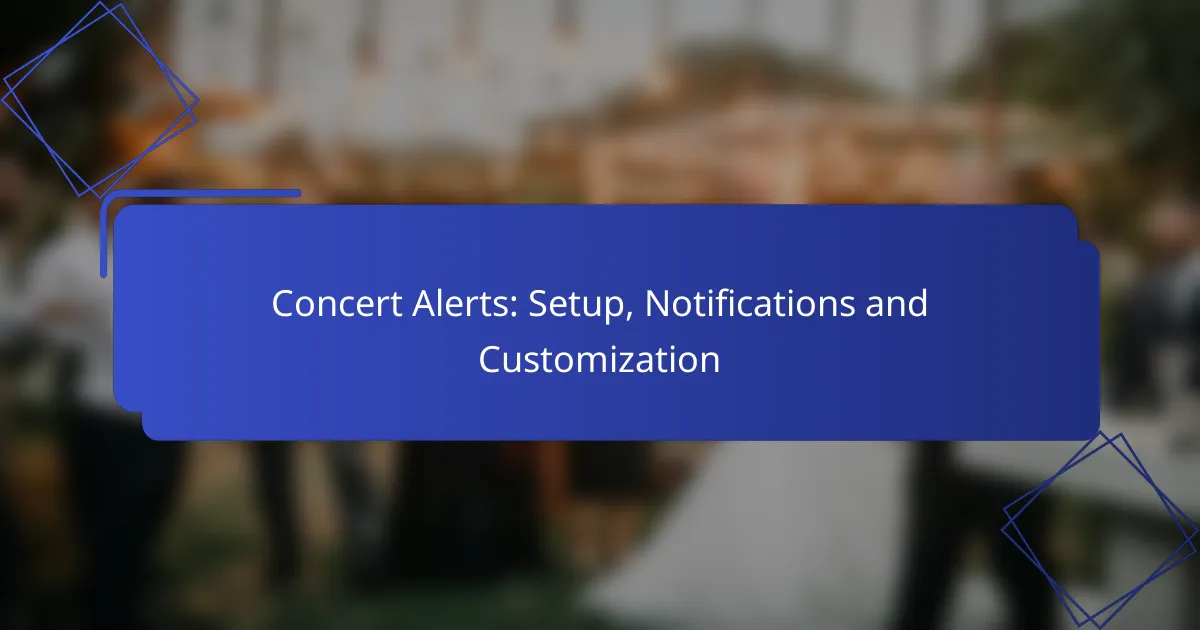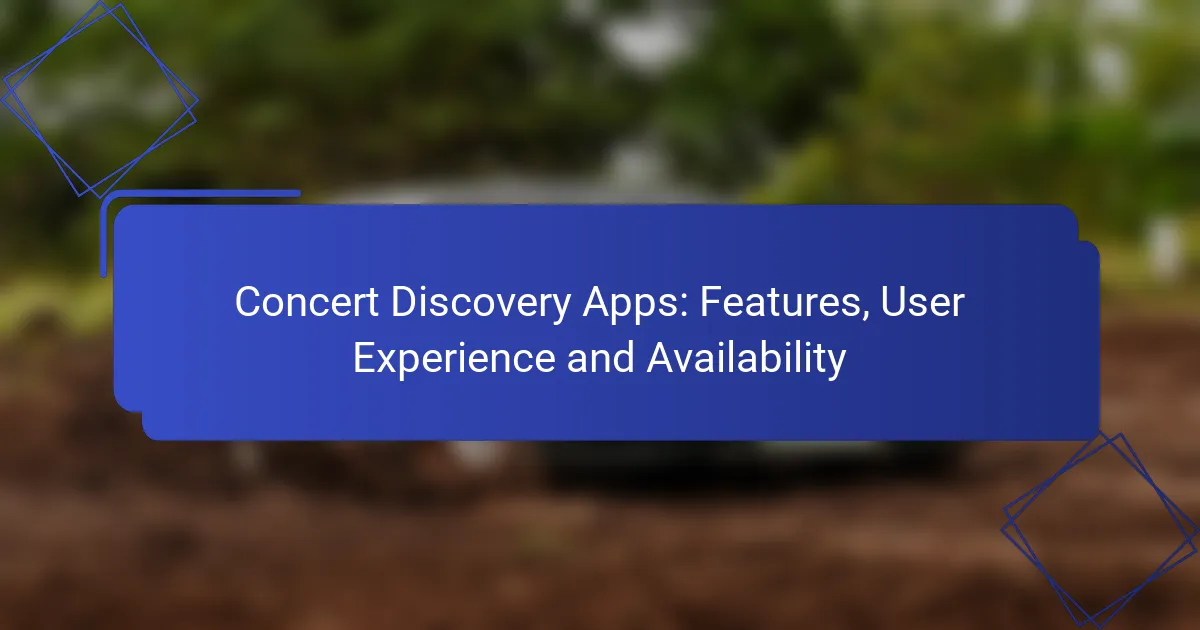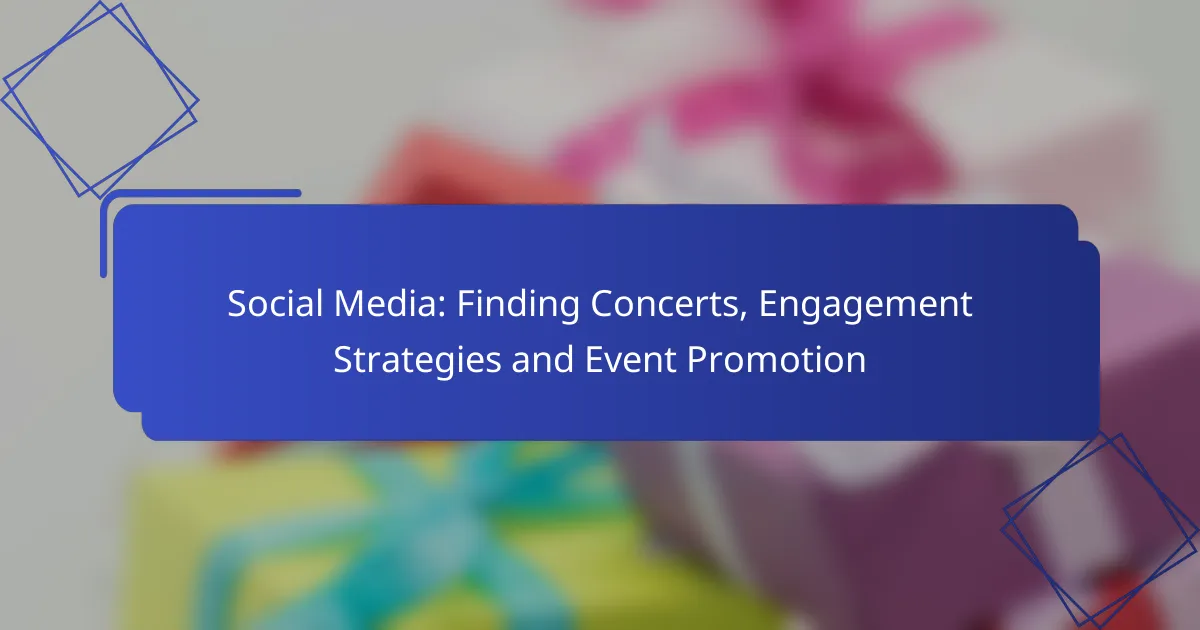Bilingual concert websites play a crucial role in enhancing accessibility by offering content in multiple languages, thereby enabling diverse audiences to engage with events more easily. By providing information in various languages, these platforms not only break down language barriers but also promote inclusivity and cultural diversity, enriching the overall concert experience.
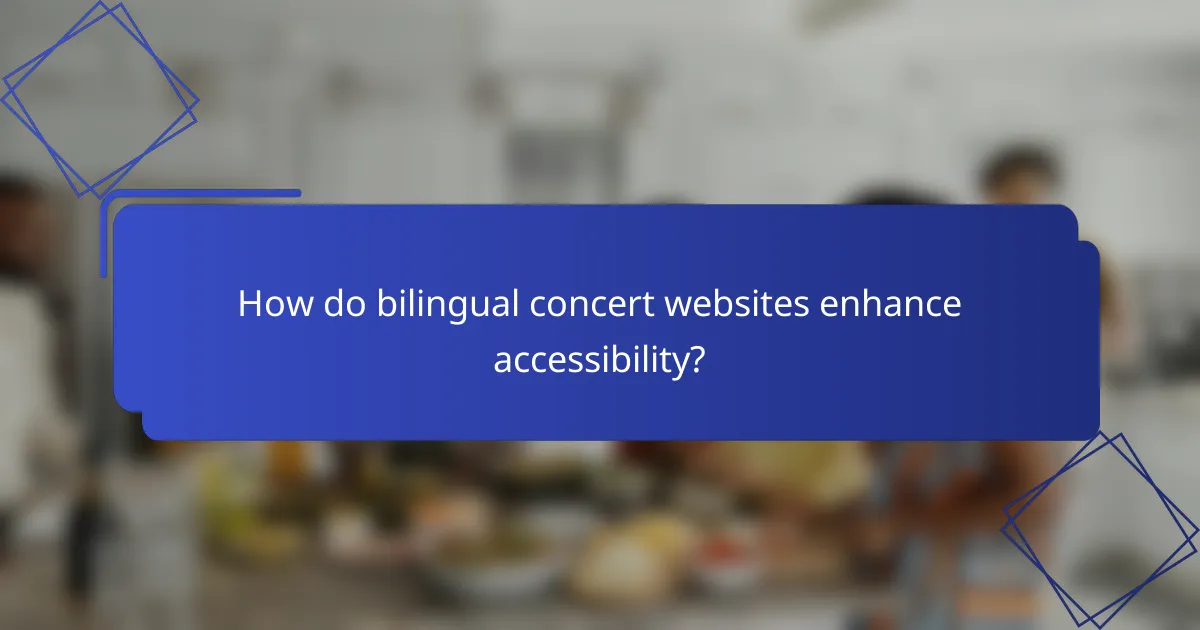
How do bilingual concert websites enhance accessibility?
Bilingual concert websites enhance accessibility by providing content in multiple languages, making it easier for diverse audiences to engage with events. This approach ensures that language barriers do not prevent potential attendees from accessing important information about concerts and performances.
Improved user navigation
Enhanced user navigation on bilingual concert websites allows visitors to easily switch between languages, ensuring a seamless browsing experience. Clear language selection options, such as flags or dropdown menus, help users find their preferred language quickly.
Additionally, consistent layout and design across language versions maintain familiarity, reducing confusion for users. This consistency is crucial for retaining visitors and encouraging ticket purchases.
Language-specific content
Language-specific content on bilingual concert websites caters to the cultural nuances and preferences of different audiences. This includes not only translations of event details but also localized information such as artist bios, venue descriptions, and promotional materials.
Offering content tailored to specific language groups can significantly enhance user engagement. For example, providing information about local artists in their native language can foster a deeper connection with the audience.
Inclusive design features
Inclusive design features on bilingual concert websites ensure that all users, regardless of language proficiency or disabilities, can access information effectively. This includes using clear fonts, contrasting colors, and alt text for images, which benefit users with visual impairments.
Moreover, implementing features like audio descriptions or sign language interpretation options can further enhance accessibility for diverse audiences. These considerations not only comply with accessibility standards but also demonstrate a commitment to inclusivity in the arts.
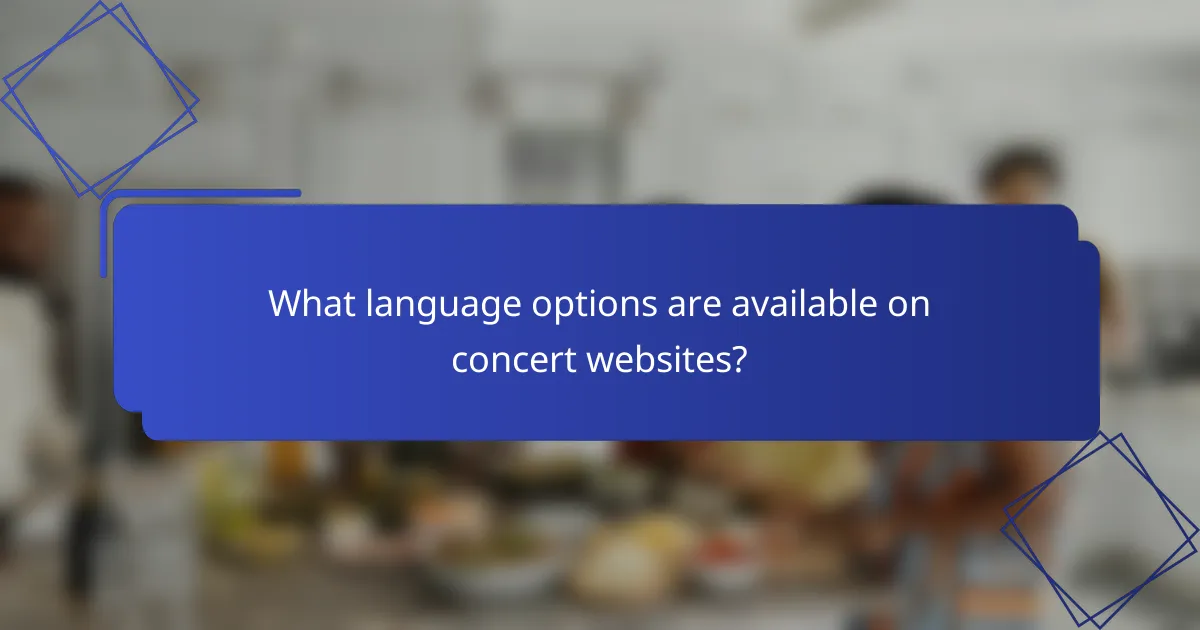
What language options are available on concert websites?
Concert websites typically offer multiple language options to cater to diverse audiences. The most common languages include English, Spanish, French, and Mandarin, along with localized dialects that enhance accessibility for specific regions.
English and Spanish
English and Spanish are the most frequently offered languages on concert websites, reflecting the large populations that speak these languages. Websites often provide a toggle feature, allowing users to switch between languages easily. This accessibility helps ensure that both English and Spanish-speaking audiences can navigate event details, purchase tickets, and access information without barriers.
For instance, major concert venues in the United States and Latin America typically feature both languages prominently, often with Spanish translations available for event descriptions, schedules, and ticketing information.
French and Mandarin
French and Mandarin are also common language options, particularly in regions where these languages are prevalent. Concert websites in Canada, parts of Europe, and Asia often include French to accommodate local audiences. Similarly, Mandarin is crucial for events in China and among Chinese-speaking communities worldwide.
Offering these languages can significantly enhance user experience, as it allows for better engagement with the local culture and audience expectations. Concert promoters should consider the demographics of their target audience when deciding on language options.
Localized dialects
Localized dialects can further enhance accessibility on concert websites by catering to specific regional audiences. For example, websites may offer translations in regional dialects such as Catalan in Spain or Quebec French in Canada. This attention to local language variations can foster a deeper connection with the audience.
When implementing localized dialects, concert organizers should ensure that translations are accurate and culturally relevant. Engaging local translators or language experts can help avoid common pitfalls and ensure that the content resonates with the intended audience.
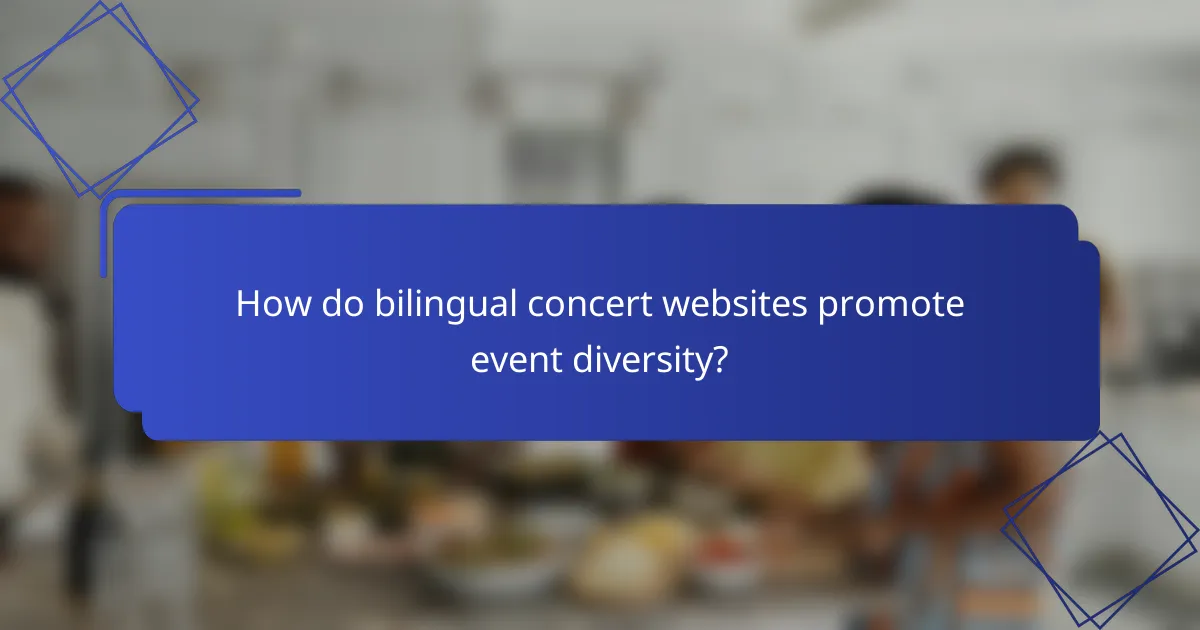
How do bilingual concert websites promote event diversity?
Bilingual concert websites enhance event diversity by providing accessible information in multiple languages, which attracts a wider audience. This inclusivity allows for the promotion of various cultural expressions and musical styles, fostering a richer concert experience.
Showcasing multicultural artists
Bilingual concert websites often feature artists from various cultural backgrounds, highlighting their unique contributions to the music scene. By presenting profiles, interviews, and performances of these multicultural artists, these platforms encourage audiences to explore different cultural narratives and sounds.
For example, a website might spotlight an Afro-Latin band alongside a traditional folk group, allowing fans to discover new genres and broaden their musical tastes. This approach not only promotes the artists but also enriches the concert experience for attendees.
Highlighting diverse genres
These websites play a crucial role in showcasing a wide range of musical genres, from classical to contemporary, and everything in between. By categorizing events by genre and providing descriptions in multiple languages, they help audiences find performances that resonate with their preferences.
For instance, a bilingual site may list events featuring jazz, hip-hop, and world music, making it easier for users to navigate and select concerts that interest them. This genre diversity attracts a broader audience, enhancing the overall vibrancy of the concert scene.
Community engagement initiatives
Bilingual concert websites often engage with local communities through initiatives such as workshops, outreach programs, and collaborative events. These efforts aim to connect diverse populations and promote cultural exchange, making concerts more inclusive and representative of the community’s demographics.
For example, a website might organize a series of free community concerts featuring local artists, encouraging participation from various cultural groups. Such initiatives not only foster a sense of belonging but also help build a loyal audience base that appreciates the diversity of events offered.
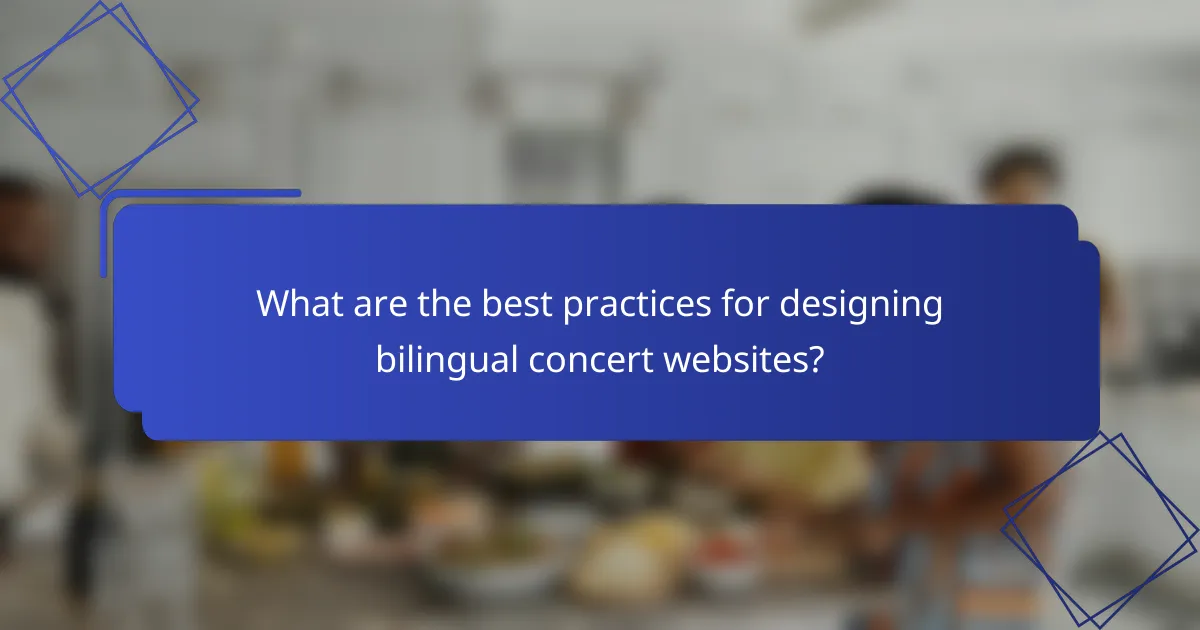
What are the best practices for designing bilingual concert websites?
Effective bilingual concert websites prioritize user accessibility and seamless language options. Key practices include responsive design, consistent language switching, and SEO optimization tailored for multiple languages.
Responsive design principles
Responsive design ensures that a bilingual concert website functions well on various devices, such as smartphones, tablets, and desktops. This adaptability enhances user experience, allowing visitors to access information easily regardless of their device.
To implement responsive design, use flexible grids and layouts, and ensure that images and text resize appropriately. Test the website across different screen sizes to confirm that all elements remain accessible and visually appealing.
Consistent language switching
Consistent language switching allows users to toggle between languages effortlessly. Incorporate a prominent language selector that is visible on every page, ensuring that users can switch languages without losing their place.
Use clear labels for language options, such as flags or language names, and maintain the same content structure in both languages. This consistency helps users navigate the site more intuitively and reduces confusion.
SEO optimization for multiple languages
SEO optimization for bilingual concert websites involves using appropriate tags and metadata for each language version. Implement hreflang tags to indicate language and regional targeting, which helps search engines serve the correct version to users based on their language preferences.
Additionally, create unique content for each language to avoid duplicate content issues. Focus on localized keywords that resonate with the target audience, which can improve search visibility and attract more visitors to the site.

How do bilingual concert websites impact audience reach in North America?
Bilingual concert websites significantly enhance audience reach in North America by catering to diverse language preferences. This inclusivity allows event organizers to connect with a wider range of potential attendees, ultimately leading to increased participation and ticket sales.
Increased ticket sales
Bilingual concert websites can lead to higher ticket sales by appealing to both English and non-English speaking audiences. By offering content in multiple languages, organizers can tap into markets that may otherwise feel excluded, resulting in a broader customer base.
For example, a concert advertised in both English and Spanish can attract a larger audience in regions with significant Hispanic populations, potentially increasing sales by a notable percentage. Ensuring that the purchasing process is also bilingual can further enhance this effect.
Broader demographic engagement
Engaging a broader demographic is a key benefit of bilingual concert websites. By providing information in multiple languages, these platforms can attract diverse groups, including immigrants and their families, who may prefer or require information in their native language.
For instance, a concert series in Canada that offers French and English options can engage both Anglophone and Francophone communities, fostering a sense of inclusion and community. This demographic engagement can lead to increased word-of-mouth promotion and social media sharing.
Enhanced brand loyalty
Bilingual concert websites can enhance brand loyalty by demonstrating an organization’s commitment to inclusivity and accessibility. When audiences feel represented and understood, they are more likely to develop a positive association with the brand.
For example, consistent bilingual communication can lead to repeat attendance at events, as audiences appreciate the effort made to cater to their language preferences. This loyalty can translate into long-term support and advocacy for the brand within diverse communities.

What tools can be used for creating bilingual concert websites?
Creating bilingual concert websites can be efficiently achieved using various tools that support multilingual features. These tools allow users to easily manage content in multiple languages, enhancing accessibility for diverse audiences.
Wix multilingual features
Wix offers built-in multilingual capabilities that enable users to create a bilingual website without extensive coding knowledge. Users can duplicate their site in different languages and customize the content for each version, ensuring a tailored experience for visitors.
To set up a bilingual site on Wix, navigate to the multilingual settings, select the desired languages, and translate your content. It’s essential to regularly update both language versions to maintain consistency and accuracy.
WordPress translation plugins
WordPress provides a range of translation plugins that facilitate the creation of bilingual concert websites. Popular options include WPML, Polylang, and TranslatePress, each offering unique features for managing multilingual content.
When using these plugins, consider factors such as ease of use, compatibility with your theme, and support for SEO optimization. For instance, WPML is known for its robust functionality but may require a subscription, while Polylang offers a free version suitable for smaller sites.
